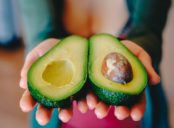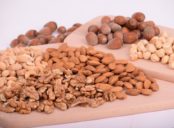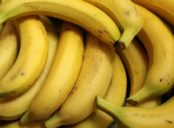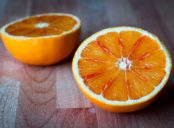Diet Fiber: A Comprehensive Guide to Types, Benefits, and Historical Overview

Introduction
Diet fiber plays a crucial role in maintaining a healthy digestive system and overall well-being. In this article, we will provide a thorough overview of diet fiber, its various types, popular choices, and quantitative measurements. Additionally, we will discuss how different types of diet fiber differ from each other and examine the historical pros and cons associated with them.
1. What is Diet Fiber?
[D1] Diet fiber, also known as dietary fiber or roughage, refers to the indigestible portion of plant-based foods. Unlike other components of food, such as proteins or fats, our bodies cannot fully break down fiber. Instead, it moves through our digestive system largely intact. This inability to digest fiber gives it unique properties that offer numerous health benefits.
2. Types of Diet Fiber

[D2] There are two main types of dietary fiber: soluble and insoluble fiber. Soluble fiber dissolves in water and forms a gel-like substance in the digestive tract, while insoluble fiber adds bulk to the stool. Both types are essential for a healthy digestive system. Popular sources of soluble fiber include oats, peas, beans, apples, citrus fruits, and psyllium husk. Insoluble fiber, on the other hand, can be found in whole grains, nuts, seeds, wheat bran, and some vegetables.
3. Quantitative Measurements of Diet Fiber
[D3] Quantifying the amount of diet fiber in food is essential for individuals to monitor their intake and ensure they meet their dietary needs. Fiber content is typically measured in grams per serving. According to dietary guidelines, adults should aim for a daily intake of 25-38 grams of fiber. However, studies suggest that the average consumption falls short, with many individuals not meeting this recommended amount. By being aware of fiber content in various foods, individuals can make informed choices to meet their dietary requirements.
4. Differentiating Diet Fiber Types
[D4] Soluble and insoluble fibers play unique roles in our bodies, leading to different health benefits. Soluble fiber has been linked to reducing cholesterol levels, managing blood sugar levels, and promoting healthy gut bacteria. On the other hand, insoluble fiber primarily aids in maintaining regular bowel movements, preventing constipation, and reducing the risk of certain digestive disorders. Both fiber types are crucial and should be incorporated into a balanced diet for optimal health.
5. Historical Overview of Diet Fiber Pros and Cons
[D5] Throughout history, there has been an ongoing discussion regarding the pros and cons of different types of diet fiber. Traditional diets, often high in whole grains and fiber-rich foods, have demonstrated various health benefits. However, the modern Western diet, which tends to be lower in fiber, has led to a rise in digestive issues and chronic diseases. In recent years, there has been a resurgence of interest in high-fiber diets due to their potential to enhance overall health and prevent certain conditions. Understanding the historical context helps us acknowledge the significance of diet fiber in promoting well-being.
Conclusion
Diet fiber plays a crucial role in maintaining a healthy digestive system and overall well-being. By incorporating both soluble and insoluble fiber into our diets, we can enjoy the benefits they offer, from reducing cholesterol levels to improving bowel regularity. It is important for individuals to understand the different types of diet fiber, their quantifiable measurements, and historical perspectives to make informed dietary choices. Prioritizing a high-fiber diet can contribute significantly to our overall health and vitality.
Remember to include multiple H2 headings throughout the article to improve its structure and appeal as a featured snippet in Google search results.





















